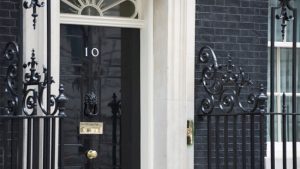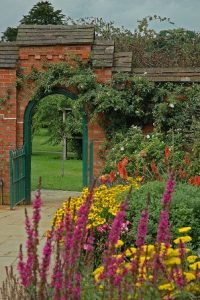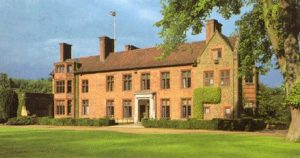
Residences
Churchill, Chartwell, and the Garden of England

February 14, 2009
Man of Kent, Kentish Man
DOUGLAS J. HALL
Feature Articles – Finest Hour 111
 Kent, that largely maritime county in the extreme southeast of England, was Winston Churchill’s spiritual home for almost half his life. When he became resident in “The Garden of England” in 1924, if not before, he undoubtedly discovered that amongst the natives there is an ancient and obscure rivalry between “Kentish Men” and “Men of Kent.” The story’s origins are uncertain and its perpetration equally ambiguous. Very approximately, Kentish Men are from the largely land-locked west of the county, whilst Men of Kent are from the east which is bounded on three sides by the sea.
Kent, that largely maritime county in the extreme southeast of England, was Winston Churchill’s spiritual home for almost half his life. When he became resident in “The Garden of England” in 1924, if not before, he undoubtedly discovered that amongst the natives there is an ancient and obscure rivalry between “Kentish Men” and “Men of Kent.” The story’s origins are uncertain and its perpetration equally ambiguous. Very approximately, Kentish Men are from the largely land-locked west of the county, whilst Men of Kent are from the east which is bounded on three sides by the sea.
Churchill’s purchase of Chartwell may, he might have thought, have given him some claim to being a Kentish Man, and some years later he was able to delight in considering himself uniquely an affiliate of both fraternities when his appointment as Lord Warden of the Cinque Ports brought him the right to reside in Walmer Castle. In fact, native-born Kentish Men and Men of Kent guard their birthright with consummate jealousy, and “foreigners” immigrating merely to take up residence are not normally or readily admitted to either clan. However, Churchill came to be regarded with equal approbation throughout his adopted county.
Born in Oxfordshire, Churchill had been itinerant for more than half his life, but when he did decide to put down roots for the second time in 1922 he was delighted to discover Chartwell, virtually on Kent’s western boundary. The tranquillity of the place captivated him. Looking out over the Weald of Kent, many years later, he was to say, “I bought Chartwell for that view.” The bonus was that the view was also within 25 miles of the House of Commons. Clementine had written to him, “I long for a country home but I would like it to be a rest and joy Bunny not a fresh preoccupation.” In the event, for the next 15 years or so, Chartwell became the biggest preoccupation imaginable, as Winston spent upwards of £30,000 (£140,000/$200,000 in today’s money) in addition to the original purchase price of £5,000, on an extensive programme of rebuilding and improvements.
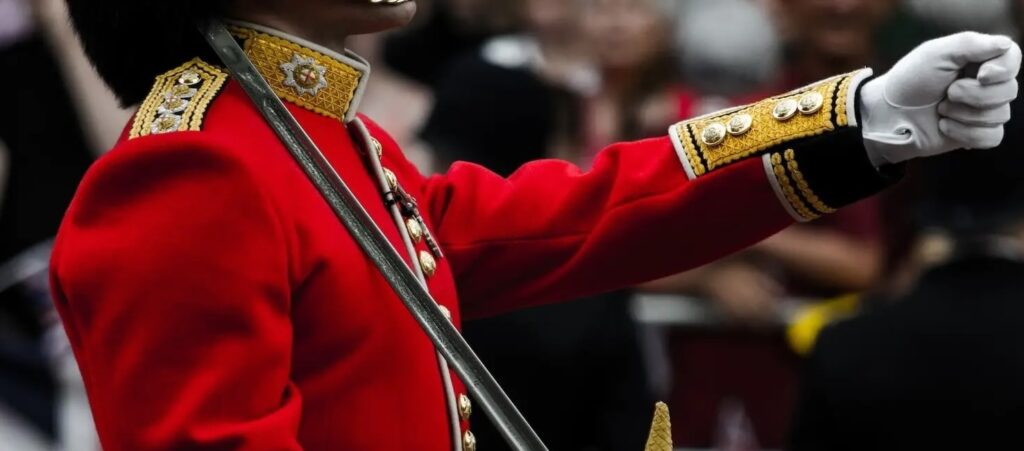
2024 International Churchill Conference
He was heard to remark, “A day away from Chartwell is a day wasted,” although in fact by the time the various enhancements had been completed to his satisfaction circumstances dictated that Chartwell was to become something of a pied-á-terre whilst he found it necessary to spend more of his time in London – successively at Morpeth Mansions, 10 Downing Street and 28 Hyde Park Gate‹or at Chequers, the Prime Minister’s country residence. Churchill’s preference was always strongly for Chartwell but, as Anthony Montague Browne related in his book Long Sunset (Cassell: 1995), the permutations of domestic arrangements became something of a trial for Clementine. He recalled one conversation at Downing Street during the early 1950s:
Winston: “I shall go to Chartwell next weekend.”
Clementine: “Winston, you can’t. It’s closed and there will be no-one to cook for you.”
Winston: “I shall cook for myself. I can boil an egg. I’ve seen it done.”
Churchill’s threat was received in dumfounded silence on all sides but it was not carried out. His gastronomic priorities clearly prevailed!
In 1945 Churchill feared that his income was no longer sufficient to allow him to maintain Chartwell and a consortium of wealthy friends offered to purchase the property on behalf of the National Trust, on condition that he could continue to live there, at a nominal rent of £350 a year, for the rest of his life. There is some dispute over the purchase price. Sir Martin Gilbert in the Official Biography (Volume VIII, page 304) quotes £43,800 but in Churchill: A Life, page 873, he cites £50,000. Most other sources quote the higher figure. That would have been a fair return on Churchill’s total expenditure on the property over more than 20 years, and by the time he died in 1965 its value would have appreciated to over £100,000. In today’s money that is in excess of £1 million but, it is stressed, this is merely a “bricks and acres” value and its historical associations and contents are priceless.
The original Cinque Ports were Dover, Hastings, Hythe, Romney and Sandwich. Until the reign of Henry VII (1485-1509) these ports had enjoyed certain privileges in return for supplying the King with a navy. Henry VII nationalized the privateers, creating the first truly Royal Navy, and withdrew the privileges, but the ancient title of Lord Warden of the Cinque Ports remained as an honorary and purely ceremonial office within the gift of the King. It had become the custom for the King to award the office in recognition of distinguished service to the State and previous incumbents had included Palmerston, Pitt and Wellington.
Once awarded, the office was for life and in 1941, on the death of Lord Willingdon – a former Governor-General of Canada and Viceroy of India -George VI offered the Lord Wardenship to Churchill. In fact, as Jock Colville revealed in The Fringes of Power (Hodder & Stoughton: 1985), Churchill’s name had been suggested to the King’s private secretary by Anthony Bevir, who looked after all patronage matters at No. 10 Downing Street. Churchill never knew this but it didn’t matter since the King was delighted to accept the recommendation.
The Prime Minister himself was much attracted by the historic splendour of the appointment, although somewhat daunted by the cost of rates, taxes and upkeep of Walmer Castle, and within a month travelled to the coast to inspect his new bailiwick. Although his appointment as Lord Warden of the Cinque Ports took effect from September 1941, Churchill deemed that he was too busy prosecuting the war to attend the colourful installation ceremony at Dover Castle. Of course it would have been quite unthinkable to mount such an event at a location within range of the German cross channel artillery, and subject furthermore to frequent visits by the Luftwaffe. In the event the traditional ceremony was held in August 1946. (The resident Scotland Yard bodyguard, Ronald Golding, recalls the day, and other happenings at Chartwell at this time, in Finest Hour 33 and 34.)
Churchill delighted in wearing the splendid Lord Warden’s uniform on any ceremonial occasion (see page 11), whether or not the occasion had any remote connection with the office. He wore it, for example, for the coronation of Queen Elizabeth II in 1953, reckoning that as Prime Minister he should not be outshone by anyone at the ceremony other than the Queen herself. There are at least three portraits of Churchill wearing his Lord Warden’s uniform: by John Leigh-Pemberton (National Maritime Museum, Greenwich), Bernard Hailstone (Dover Town Hall) and Dennis Ramsey (Deal Town Hall).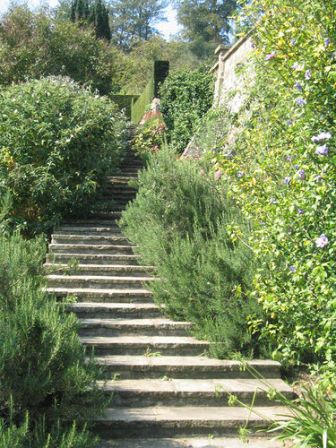
When Churchill reopened Chartwell after World War II he hoisted large and colourful flags, bearing the heraldic devices of the office of Lord Warden, from the Chartwell flagstaff (right) whenever he was in residence. But because of the proximity of the flagstaff to a chimney stack, the flags very soon suffered undue damage and flag flying was soon restricted to special occasions. He was elected an Honorary Life Member of the Association of Men of Kent and Kentish Men in 1949. The Romney, Hythe and Dymchurch Railway, a 15-inch-gauge light passenger railway running for 13 1/2 miles along the southern coast of Kent, connects two of the Cinque Ports and has appropriately commemorated Churchill’s Lord Wardenship. One of its locomotives, a one-third scale replica of a North American Pacific 4-6-2, to this day proudly carries the nameplate “Winston Churchill.”
Subscribe
WANT MORE?
Get the Churchill Bulletin delivered to your inbox once a month.
